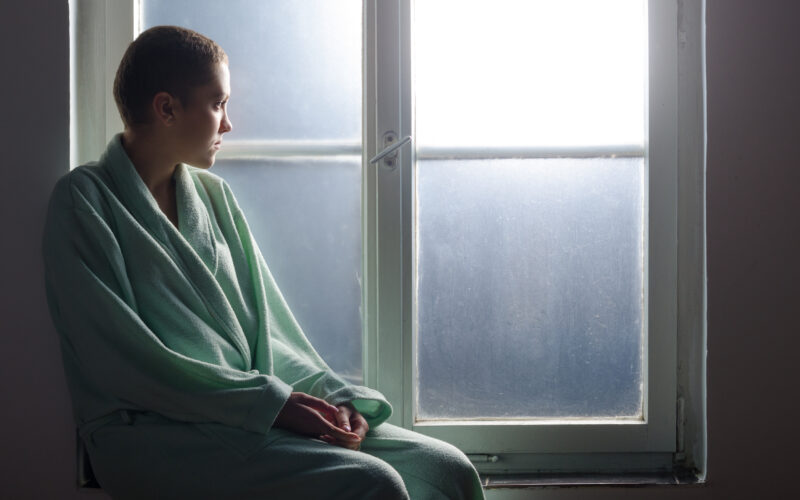Are you at risk of breast cancer? For decades now, at least in the United States, one 1 of 8 women are predestined to develop breast cancer at some point in their lifetimes—more than 234,000 new diagnoses each year [i].
While, thankfully, the medical and surgical management of breast cancer has progressed to the point that far fewer women die from breast cancer than in past decades, clearly more needs to be done to prevent the development of this dreaded diagnosis.
So, is there any truth to the claim that hormonal contraception increases the incidence of breast cancer?
It is worth noting that Asian women have always had the lowest incidence of breast cancer [ii]. But after Asian women migrate to the United States, rates of breast cancer increase (same study). And even in those Asian countries traditionally with lower breast-cancer rates, there has been an increase in breast cancer rates as women in these nations adopted more Western lifestyles, including the adoption of modern birth control methods which decrease fertility rate in these Asian nations [iii].
Until recently, mainstream articles in print and online on the topic of breast-cancer prevention have only emphasized non-reproductive factors in educating women as to how to prevent breast cancer. Encouraging young women to exercise, and eat a low-fat diet and more fruits and vegetables, and avoid heavy drinking and smoking are sound strategies for preventing many forms of cancer and heart disease—and are not at all controversial [iv]. It is perhaps worth noting that consumption of “phytoestrogens,” plant estrogens, particularly those found in soy products, has been shown to have a slightly protective effect vs breast cancer—which may also account in part for the protections Asian populations have enjoyed when it comes to this disease.
Much more controversial is the fact that the use of artificial methods of birth control such as oral contraceptives and modern IUDs increase the risk of breast cancer, as noted in the recent study of over 1.8 million women in Denmark over a 10 year period of time [v]. This study revealed up to 60% increased incidence of breast cancer in women which was directly related to the length of time they were on the Pill, and even in women who were using the newer progestin-releasing IUDs (Mirena, Skyla, etc).
This study has contradicted what many in health care have been saying for decades—that birth control pills do not increase the risk of breast cancer. The thinking that the two are unrelated is based solely upon one poorly designed study, known as the “CARE” Study, in which 4,500 women were interviewed by telephone to assess their Contraceptive and Reproductive Experiences (CARE).
The CARE study, which appeared in New England Journal of Medicine on June 27, 2002 [vi] was accompanied by an editorial entitled “Good News about Oral Contraceptives,” and the principal author of the study, Polly Marchbanks, Ph.D., has become somewhat of a hero among those in the artificial contraception arena, presently working at the Division of Reproductive Health at the CDC in Atlanta. The principal aim of the CDC when it comes to women’s “reproductive health” has been to discover and disseminate as many means of preventing pregnancy as possible—embracing a population health agenda which aims to limit population growth worldwide.
Preventing pregnancy—essentially, reducing the overall fertility of women (and men) becomes the primary goal—regardless of the impact upon individual women who are offered any number of artificial family planning options. Hence, as I discussed in my book, The Hidden Truth, “preventing pregnancy at any cost” becomes the guiding principle. Just as women with precancerous changes on their cervix are not informed about the connection between oral contraception and cervical cancer, women at high risk of breast cancer do not hear the truth about OCs, IUDs, and their increased risk of breast cancer.
Instead, organizations such as the National Cancer Institute (NCI) will mention every risk factor except the Pill, IUD, and so on. One such article from NCI was headlined, “Four established risk factors may account for over 40% of U.S. breast cancer cases [vii].” This article cites a study of 7,500 women followed over a 15 year period of time, and identified the following four risk factors: having no children; having a first child after the age of 30, higher income, and having a first-degree relative (mother or sister) with a history of breast cancer. Interestingly, the reproductive health factors (no children/later age of first pregnancy) accounted for 30% of the breast cancer cases, while having a family history only 9%. The authors/researchers do not bother to mention that women who are childless and/or deferring childbirth are highly likely to be on or have taken oral contraceptives, IUDs, contraceptive implants, Depo-Provera, and so on.
Considering this deception in women’s health care when it comes to hormonal contraception and breast cancer, we should take a look at the reason for this causal relationship.
Why women who take the Pill before pregnancy increase their risk of breast cancer
The relationship between hormonal contraception and breast cancer has to do with how it delays breast maturation that comes naturally with pregnancy, but also how the synthetic hormones increase cancer-susceptibility conditions in breast tissue.
The young woman’s breast, after puberty and prior to first full-term pregnancy, has relatively much less breast tissue than after a pregnancy, and it is composed of Type 1 and Type 2 “lobules” (collections of cells) which have many estrogen and progesterone receptors. This immature breast tissue accounts for 97% of breast cancers. This tissue is also more likely to become cancerous when exposed to the much more potent synthetic estrogens and progestins found in oral contraceptives and related hormonal birth control methods (IUDs, implants, Depo-Provera) [viii].
During the course of a normal, uninterrupted pregnancy, and furthermore during breastfeeding, these Type 1 and Type 2 lobules are transformed into the “mature” Type 3 and Type 4 lobules that contain the colostrum or milk for the newborn. Type 3 and Type 4 lobules (mature breast tissue) are cancer resistant; hence the woman with multiple pregnancies who has breastfed her infants lowers her risk of breast cancer.
This explains why women who take the Pill before their first pregnancy are at a high risk of developing breast cancer.
The Breast Cancer Prevention Institute in Poughkeepsie, NY has published materials summarizing the facts of the breast maturation process and risk of breast cancer, as follows: “The longer a woman waits before having her first child, the higher her risk because she has a longer ‘susceptibility window.’ For example, a woman who gives birth at 18 has a 50-75% lower risk of breast cancer than a woman who waits until she is 30. Each additional birth results in a further 10% risk reduction. Breastfeeding reduces risk in proportion to the cumulative length of lactation” [ix].
It’s also noteworthy that the hormones found in artificial methods of birth control such as the Pill are not human sex hormones, and neither are many of the hormones any women take after menopause, Premarin/Prempro foremost among these (“Premarin” is actually made of estrogens derived from pregnant mare horses, and is much more potent than human estrogen). While the medical profession has for years recognized the increased risk of breast cancer in postmenopausal women on Prempro or Premarin [x], even in this case female patients seem to be the last to know.
The synthetic estrogens in oral contraceptives—ethinyl estradiol, mestranol—are even more potent than the horse estrogens found in Premarin and therefore more likely to be carcinogenic to the women’s breast tissue during the breast-cancer susceptibility window. Not to mention that many other adverse effects these steroids (as well as the many others found in the Pill and IUDs, etc) have on the woman’s body, due to the host of nutritional deficiencies that they create.
Thanks to the recent study of 1.6 million Danish women, physicians in women’s health can no longer honestly tell their patients that there is “no risk” of breast cancer due to the Pill and other methods. Still, it is unknown just how much this will translate to industry guidelines and doctor-patient interactions.
For women concerned with the carcinogenic nature of hormonal contraception, it might be worth considering natural methods of family planning. These methods are effective and hormone-free, with absolutely zero side-effects.
It’s time to make truly informed decisions about family planning and pregnancy prevention. I hope this article will be a step in that direction.
References
[i] American Cancer Society – Facts and Figures 2013, Atlanta, GA, ACS, Inc 2013
[ii] “Migration patterns and breast cancer risk in Asian American women,” Journal National Cancer Institute, 1993;85: 1819-1827
[iii] “Priorities for the Primary Prevention of Breast Cancer.” Colditz and Bohlke in CA: A Cancer Journal for Clinicians, 2014;64: 186-194
[iv] “Young Women and Breast Health,” The Female Patient, 2003;28: 47. Also “American Health Foundation Update in Primary Care and Cancer,” October 1998, (AHF recommends lifestyle changes as primary prevention tools against breast cancer).
[v] “Contemporary Hormonal Contraception and the Risk of Breast Cancer.” December 7, 2017: New England Journal of Medicine. 2017; 377:2228-2239 DOI: 10.1056/NEJMoa1700732
[vi] “Oral Contraceptives and the Risk of Breast Cancer.” June 27, 2002: New England Journal of Medicine; 346:2025-2032 DOI: 10.1056/NEJMoa013202
[vii] Journal National Cancer Institute, vol 87, no 23, cited in Primary Care & Cancer, Vol 16 No1 p 22.
[viii] (2013) Normal Breast Physiology: The Reasons Hormonal Contraceptives and Induced Abortion Increase Breast-Cancer Risk, The Linacre Quarterly, 76:3, 236-249, DOI: 10.1179/002436309803889142
[ix] From the pamphlet, “Reproductive Breast Cancer Risks and Breast Lobule Maturation”
[x] Based on Women’s Health Initiative studies. See also: https://www.nwhn.org/menopause-hormone-therapy-and-breast-cancer/







